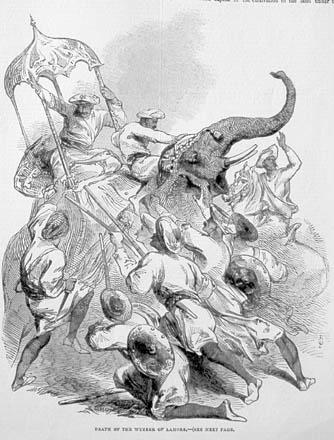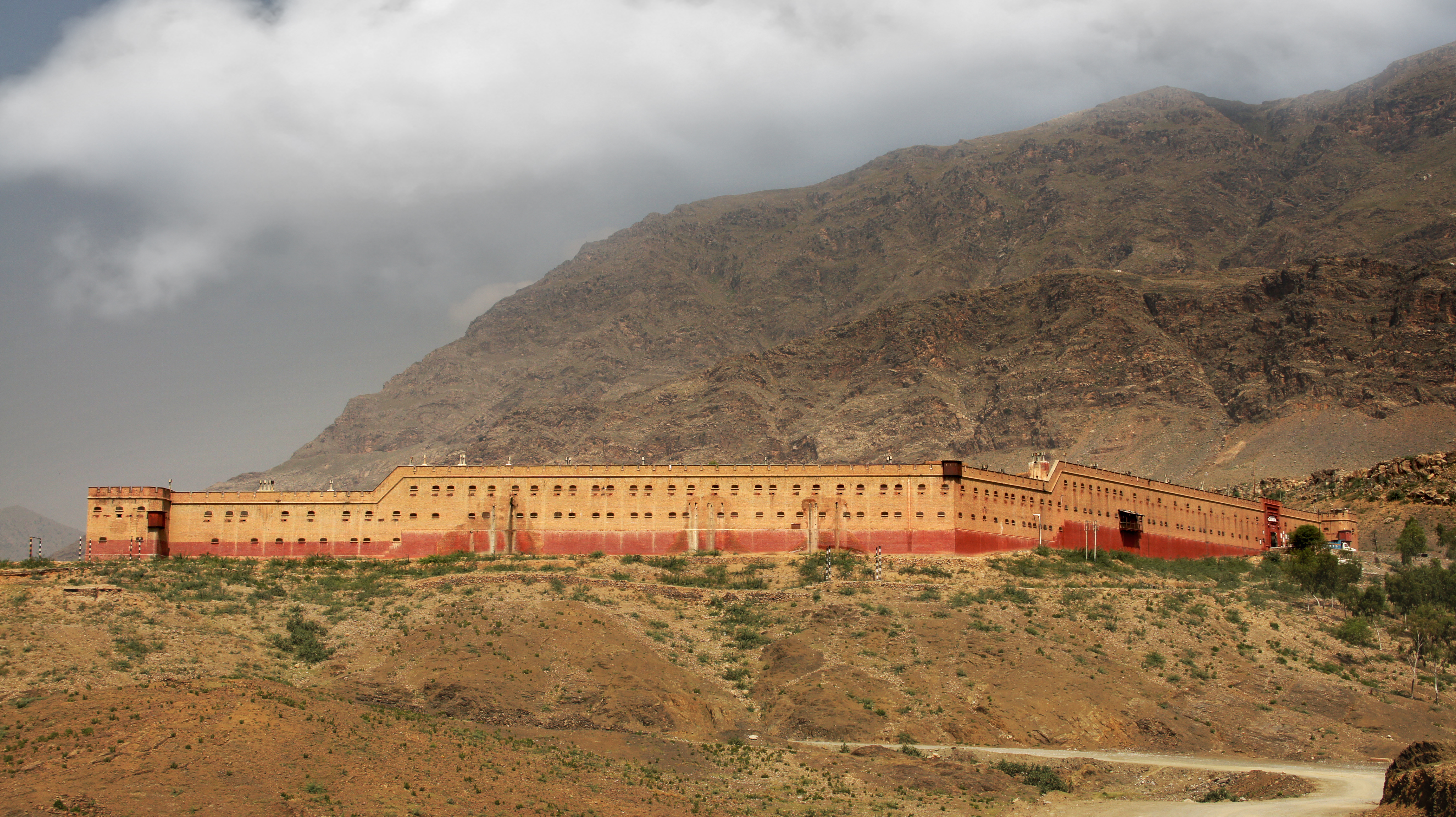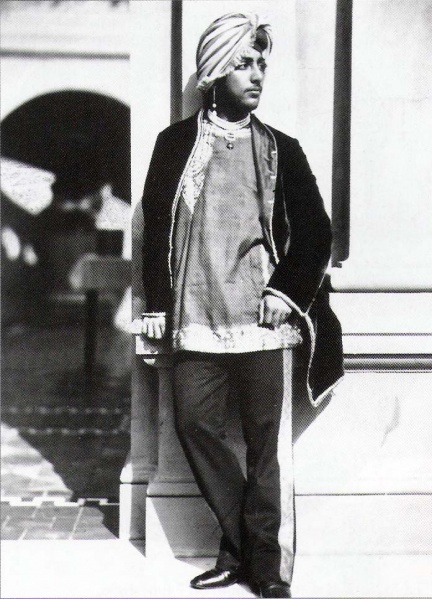|
Sheikhupura Fort
Sheikhupura Fort ( Punjabi, ) is a Mughal-era fort built in 1607 near the city of Sheikhupura in Punjab, Although, there is no conclusive evidence supporting this, the Tuzk-e-Jahangiri mentions that the Emperor assigned the job of constructing the Fort to Sikandar Moeen on his hunting trip to Hiran Minar in 1607AD. It was built during the reign of Emperor Jahangir. The fort was drastically altered during the Sikh-era, with numerous buildings constructed - some with exquisite Sikh-era frescoes. In 1808, the fort was conquered by the six-year-old of Maharaja Ranjit Singh, Prince Kharak Singh. Ranjit Singh granted this fort as “Jagir”, in 1811 to his wife and the prince's mother, Maharani Datar Kaur who had a considerable role in its rehabilitation and lived in it to her last day. In mid 19th century when power turned to the British, the fort of Sheikhupura was used for the 'house arrest' of Maharaja’s last queen, Maharani Jind Kaur the mother of Maharaja Duleep Singh. The ... [...More Info...] [...Related Items...] OR: [Wikipedia] [Google] [Baidu] |
Sheikhupura
Sheikhupura ( pa, ; ur, ) also known as Qila Sheikhupura, is a city in the Pakistani province of Punjab, Pakistan, Punjab. Founded by the Mughal Empire, Mughal Emperor Jahangir, Jehangir in 1607, Sheikhupura is the List of most populous cities in Pakistan, 16th largest city of Pakistan by population and is the headquarters of Sheikhupura District. The city is an industrial center, and satellite town, located about 38 km northwest of Lahore. It is also connected to District Kasur. The old name of Sheikhupura was “Virkgarh” due to large number of Virk jatts, Jats settled in the area. The Virks are still strong in this area both politically and economically. There are around 132 villages in this area which belong to the Virks. Etymology The region around Sheikhupura was previous known as ''Virk Garh, or'' "''Virk'' Fort", in reference to the Jat people, Jat tribe that inhabited the area. The city, founded in 1607, was named by Mughal Empire, Mughal Emperor Jahangir, J ... [...More Info...] [...Related Items...] OR: [Wikipedia] [Google] [Baidu] |
Jind Kaur
Maharani Jind Kaur ( – 1 August 1863) was regent of the Sikh Empire from 1843 until 1846. She was the youngest wife of the first Maharaja of the Sikh Empire, Ranjit Singh, and the mother of the last Maharaja, Duleep Singh. She was renowned for her beauty, energy and strength of purpose and was popularly known as ''Rani Jindan'', but her fame is derived chiefly from the fear she engendered in the British in India, who described her as "the Messalina of the Punjab". After the assassinations of Ranjit Singh's first three successors, Duleep Singh came to power in September 1843 at the age of 5 and Jind Kaur became Regent on her son's behalf. After the Sikhs lost the First Anglo-Sikh War she was replaced in December 1846 by a Council of Regency, under the control of a British Resident. However, her power and influence continued and, to counter this, the British imprisoned and exiled her. Over thirteen years passed before she was again permitted to see her son, who was taken to ... [...More Info...] [...Related Items...] OR: [Wikipedia] [Google] [Baidu] |
Forts In Punjab, Pakistan
A fortification is a military construction or building designed for the defense of territories in warfare, and is also used to establish rule in a region during peacetime. The term is derived from Latin ''fortis'' ("strong") and ''facere'' ("to make"). From very early history to modern times, defensive walls have often been necessary for cities to survive in an ever-changing world of invasion and conquest. Some settlements in the Indus Valley civilization were the first small cities to be fortified. In ancient Greece, large stone walls had been built in Mycenaean Greece, such as the ancient site of Mycenae (famous for the huge stone blocks of its 'cyclopean' walls). A Greek '' phrourion'' was a fortified collection of buildings used as a military garrison, and is the equivalent of the Roman castellum or English fortress. These constructions mainly served the purpose of a watch tower, to guard certain roads, passes, and borders. Though smaller than a real fortress, they acted ... [...More Info...] [...Related Items...] OR: [Wikipedia] [Google] [Baidu] |
List Of Museums In Pakistan
This is a list of museums, galleries, and related building structures in Pakistan. Museums and galleries Archaeological and historical museums * Harappa Museum, Harappa * Bahawalpur Museum, Bahawalpur * Bannu Museum, Bannu * Chitral Museum * City Museum, Gorkhatri, Peshawar * Dir Museum, Chakdara * Hund Museum, Swabi * Kasur Museum, Kasur * Kalasha Dur Museum, Chitral * Lahore Museum, Lahore ... [...More Info...] [...Related Items...] OR: [Wikipedia] [Google] [Baidu] |
List Of Forts In Pakistan
The following is a partial list of forts and castles in Pakistan: See also * Tourism in Pakistan * List of UNESCO World Heritage Sites in Pakistan * List of museums in Pakistan * Lahore Fort * Rohtas Fort * Noor Mahal * Derawar Fort References External links Forts of Pakistan by Shaikh Muhammad Ali {{Castles in Pakistan Castles in Pakistan, * Forts in Pakistan, * Lists of forts, Pakistan Pakistan military-related lists, Forts Lists of tourist attractions in Pakistan, Forts ... [...More Info...] [...Related Items...] OR: [Wikipedia] [Google] [Baidu] |
Hiran Minar
Hiran Minar ( ur, ; or ''"The Deer Tower"'') is an early 16th-century Mughal era complex located in Sheikhupura, in the Pakistani province of Punjab. The complex was built at the site of a game reserve in honour of Mughal Emperor Jahangir's beloved antelope named Mansraj. The Emperor is remembered for his fondness of nature, and his complex embodies the Mughal relationship between humans, pets, and hunting.Hiran Minar and Tank, Sheikhupura - description on UNESCO website Published 14 December 1993, Retrieved 1 May 2020 Location The ''Hiran Minar'' complex is located in the city of , about 40 kilometres northwest of |
Duleep Singh
Maharaja Sir Duleep Singh, GCSI (4 September 1838 – 22 October 1893), or Sir Dalip Singh, and later in life nicknamed the "Black Prince of Perthshire", was the last ''Maharaja'' of the Sikh Empire. He was Maharaja Ranjit Singh's youngest son, the only child of Maharani Jind Kaur. He was placed in power in September 1843, at the age of five, with his mother ruling on his behalf, and after their defeat in the Anglo-Sikh War, under a British Resident. He was subsequently deposed by the British Crown, and thereafter exiled to Britain at age 15 where he was befriended by Queen Victoria, who is reported to have written of the Punjabi Maharaja: "Those eyes and those teeth are too beautiful".Eton, the Raj and modern India By Alastair Lawson; 9 March 2005; BBC News. The Queen was godmother to several of his children. ... [...More Info...] [...Related Items...] OR: [Wikipedia] [Google] [Baidu] |
Datar Kaur
Maharani Datar Kaur (born Bibi Raj Kaur Nakai; (c. 1784– 20 June 1838) was the queen consort of Maharaja Ranjit Singh, the founder of the Sikh Empire and the mother of his successor, Maharaja Kharak Singh. She was the daughter of Sardar Ran Singh Nakai, third ruler of the Nakai Misl and Sardarni Karmo Kaur. Datar Kaur was betrothed to Ranjit Singh in childhood; the Anand Karaj took place when the couple were still young. Though Ranjit Singh married several times for political reasons, Datar Kaur remained his favorite and most respected wife. He lovingly addressed her as ''Mai Nakain''. In 1801, she gave birth to Kharak Singh, the heir apparent of Ranjit Singh. She took an active interest in the affairs of the State and was given command during the Battle of Multan (1818) alongside her son, Kharak Singh. She was the grandmother of Maharaja Nau Nihal Singh (1821–1840) and aunt of Sardar Kahan Singh Nakai. Datar Kaur died on 20 June 1838 in her haveli in Sheikhupura. Her ... [...More Info...] [...Related Items...] OR: [Wikipedia] [Google] [Baidu] |
Punjab, Pakistan
Punjab (; , ) is one of the four provinces of Pakistan. Located in central-eastern region of the country, Punjab is the second-largest province of Pakistan by land area and the largest province by population. It shares land borders with the Pakistani provinces of Khyber Pakhtunkhwa to the north-west, Balochistan to the south-west and Sindh to the south, as well as Islamabad Capital Territory to the north-west and Autonomous Territory of AJK to the north. It shares an International border with the Indian states of Rajasthan and Punjab to the east and Indian-administered Kashmir to the north-east. Punjab is the most fertile province of the country as River Indus and its four major tributaries Ravi, Jhelum, Chenab and Sutlej flow through it. The province forms the bulk of the transnational Punjab region, now divided among Pakistan and India. The provincial capital is Lahore — a cultural, modern, historical, economic, and cosmopolitan centre of Pakistan. Other major cities ... [...More Info...] [...Related Items...] OR: [Wikipedia] [Google] [Baidu] |
Kharak Singh
Kharak Singh (22 February 1801 – 5 November 1840) was the second Maharaja of the Sikh Empire. He was the eldest son of Maharaja Ranjit Singh, founder of the Sikh Empire and his consort, Maharani Datar Kaur. He succeeded his father on 27 June 1839 and reigned until his dethronement and imprisonment on 8 October 1839. He was succeeded by his only son Nau Nihal Singh. Early life He was born on 22 February 1801 in Lahore, Punjab. He was the first son of Ranjit Singh and his second wife Datar Kaur Nakai.C. Grey, European Adventurers of Northern India, 1785 to 1849, Asian Educational Services, 1996, His mother was the daughter of Ran Singh Nakai, third ruler of the Nakai Misl. The prince was named by his father "Kharak" (ਖਰਕ) which means 'Wielder of the Sword' he was named after the unconquerable warrior mentioned in Dasam Granth. According to Gyani Sher Singh, Ranjit Singh knew the entire Dasam Granth by heart. It was his birth that persuaded his father to proclaim himself ... [...More Info...] [...Related Items...] OR: [Wikipedia] [Google] [Baidu] |
Maharaja Ranjeet Singh
Ranjit Singh (13 November 1780 – 27 June 1839), popularly known as Sher-e-Punjab or "Lion of Punjab", was the first Maharaja of the Sikh Empire, which ruled the northwest Indian subcontinent in the early half of the 19th century. He survived smallpox in infancy but lost sight in his left eye. He fought his first battle alongside his father at age 10. After his father died, he fought several wars to expel the Afghans in his teenage years and was proclaimed as the "Maharaja of Punjab" at age 21. His empire grew in the Punjab region under his leadership through 1839. Prior to his rise, the Punjab region had numerous warring misls, misls (confederacies), twelve of which were under Sikh rulers and one Muslim. Ranjit Singh successfully absorbed and united the Sikh misls and took over other local kingdoms to create the Sikh Empire. He repeatedly defeated Afghan-Sikh Wars, invasions by outside armies, particularly those arriving from Afghanistan, and established friendly relat ... [...More Info...] [...Related Items...] OR: [Wikipedia] [Google] [Baidu] |








